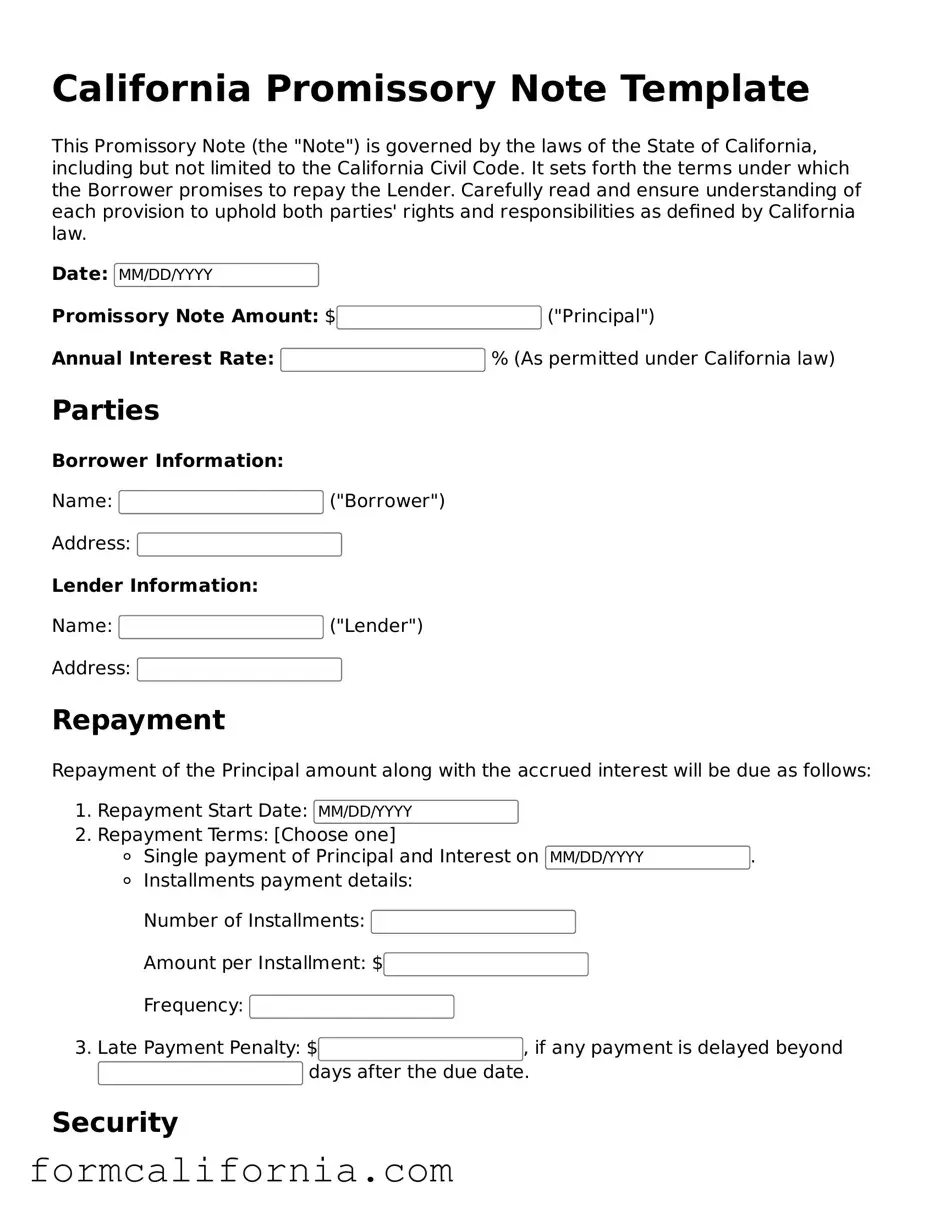The California Promissory Note form is closely related to the Loan Agreement. Both documents serve the purpose of delineating the terms under which money is borrowed and must be repaid. While a Promissory Note is a straightforward pledge by the borrower to repay the sum, a Loan Agreement is more comprehensive, covering additional clauses such as the rights and obligations of both parties, the interest rate, and the repayment schedule in greater detail.
Another similar document is the Mortgage Agreement. It also involves the borrowing of money, but specifically ties the loan to a piece of real estate as collateral. Similar to a Promissory Note, it outlines repayment terms but goes further, securing the loan against the property, which can be foreclosed upon if the borrower fails to comply with the terms.
A Deed of Trust operates in a fashion akin to a Promissory Note and a Mortgage Agreement combined but involves a third party, the trustee, who holds the actual title to the property until the loan is repaid. The borrower signs a Promissory Note, and the Deed of Trust serves as the security for that note, spelling out the procedure for repayment and foreclosure if necessary.
The Personal Guarantee is analogous to a Promissory Note in its function of ensuring repayment of a loan. This document involves a third party agreeing to repay the debt if the original borrower fails to do so, adding an additional layer of security for the lender similar to the commitment made in a Promissory Note.
An IOU, similar to a Promissory Note, is a simple acknowledgment of debt. However, it is more informal and typically does not specify repayment terms such as due dates or interest rates. Both serve as written promises to pay a specified sum of money to another party, but a Promissory Note is more formal and comprehensive.
The Bill of Sale is similar in that it confirms a transaction between two parties, much like a Promissory Note confirms a loan agreement. However, it is typically used for the sale of goods or personal property, indicating a transfer of ownership, without involving terms for repayment over time.
A Credit Agreement shares traits with a Promissory Note, as it outlines the terms under which credit is extended from a lender to a borrower, including repayment terms. Unlike a simple Promissory Note, a Credit Agreement often encompasses revolving credit facilities, such as credit cards or lines of credit, and includes detailed terms and conditions.
An Installment Agreement, much like a Promissory Note, involves the repayment of a loan in scheduled payments. However, it is specifically designed to structure the debt into evenly divided payments over a set period, providing more detailed scheduling compared to a typical Promissory Note.
The Secured Promissory Note is a variant that, while maintaining the essence of an unsecured Promissory Note, adds a component of collateral. This means that in addition to promising to repay the borrowed amount, the borrower also agrees to pledge specific assets as security, enhancing the lender’s assurance of repayment similar to a Mortgage Agreement.
Last but not least, the Lease Agreement, while primarily used for rental arrangements rather than lending transactions, shares conceptual ground with a Promissory Note since it outlines terms between two parties over a financial matter. In a Lease Agreement, the focus is on the payment terms for the right to use real estate or personal property, involving regular payments similar to a loan repayment structure.
